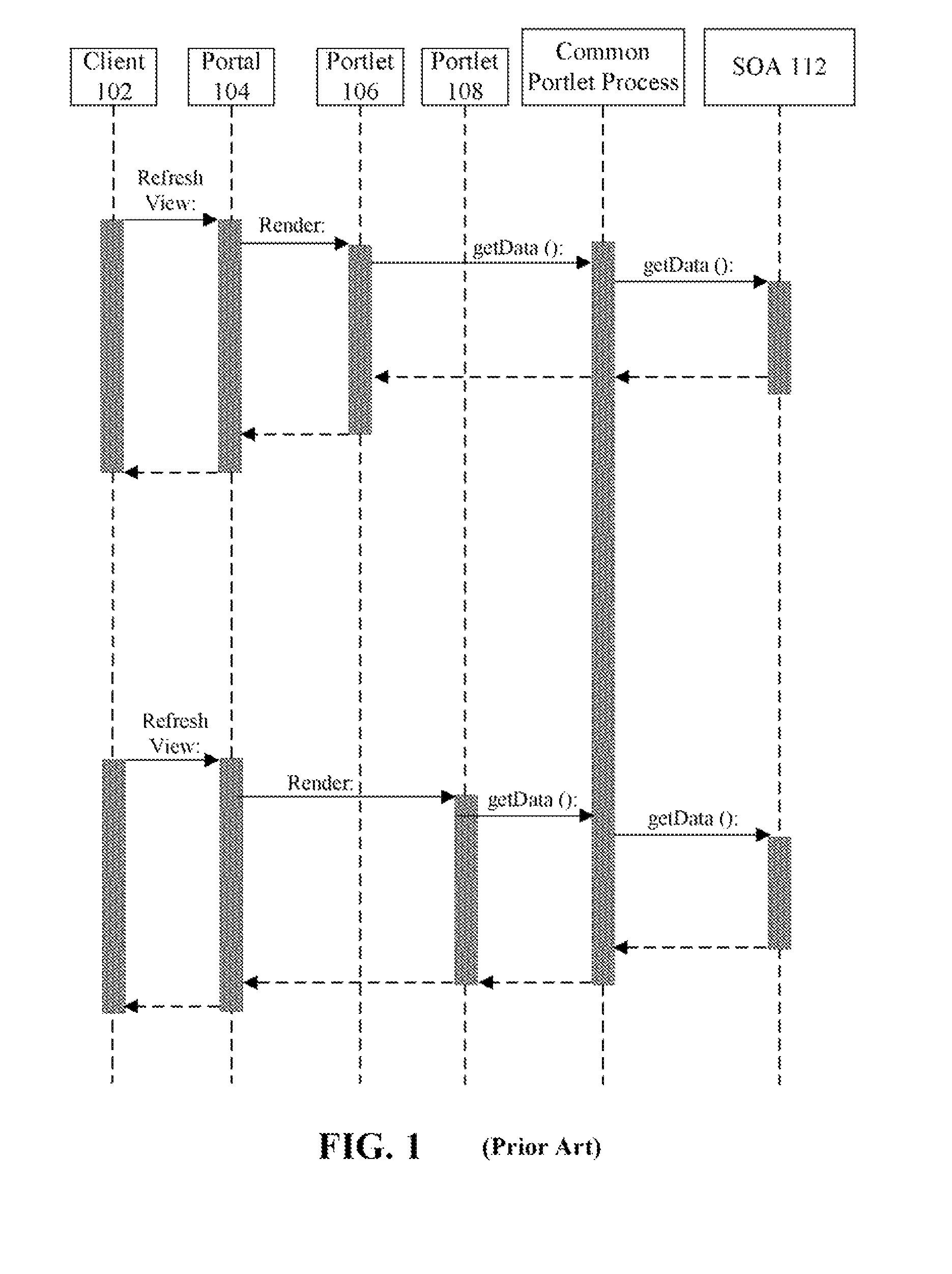Updating portlet interface controls by updating a hidden version of the control and then switching it with a displayed version
a portlet interface and control technology, applied in the field of portlet handling, can solve the problems of portlet visual controls appearing to be stalled, confusing visual experience, and many substantial problems, and achieve the effect of avoiding serialization problems
- Summary
- Abstract
- Description
- Claims
- Application Information
AI Technical Summary
Benefits of technology
Problems solved by technology
Method used
Image
Examples
Embodiment Construction
[0028]FIG. 2 is a schematic diagram of a system 200 for updating portlet information obtained from data sources in accordance with an embodiment of the inventive arrangements disclosed herein. In system 200, a client 210 can include portlets 212, 214, 216, and 218, which are updated by interaction engine 220. Each portlet 212-218 can be bound to a data source 240, which it uses to refresh an interface control contained within the portlet 212-218. Each interface control of portlets 212-218 can have multiple versions, including a presented version and at least one hidden version. Interaction engine 220 can update the hidden version with data fetched from data source 240, which is then swapped with the presented version. This process can then be iteratively repeated. By first constructing a new and completely updated version of the updated interface control and then swapping that updated version with an outdated version of the control, a flickering effect is eliminated and / or reduced.
[...
PUM
 Login to View More
Login to View More Abstract
Description
Claims
Application Information
 Login to View More
Login to View More - R&D
- Intellectual Property
- Life Sciences
- Materials
- Tech Scout
- Unparalleled Data Quality
- Higher Quality Content
- 60% Fewer Hallucinations
Browse by: Latest US Patents, China's latest patents, Technical Efficacy Thesaurus, Application Domain, Technology Topic, Popular Technical Reports.
© 2025 PatSnap. All rights reserved.Legal|Privacy policy|Modern Slavery Act Transparency Statement|Sitemap|About US| Contact US: help@patsnap.com



